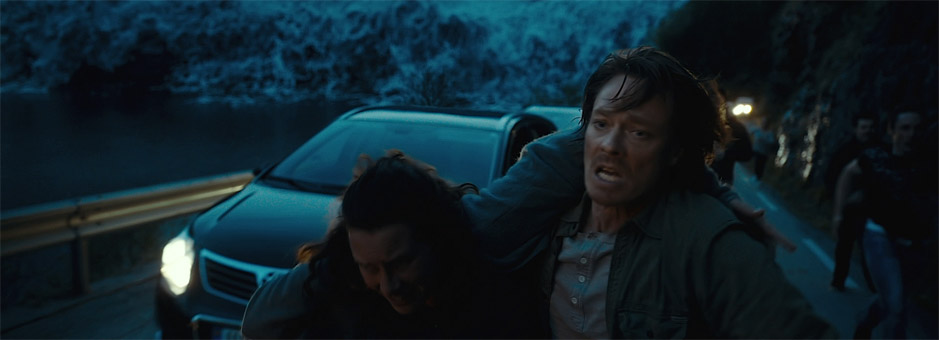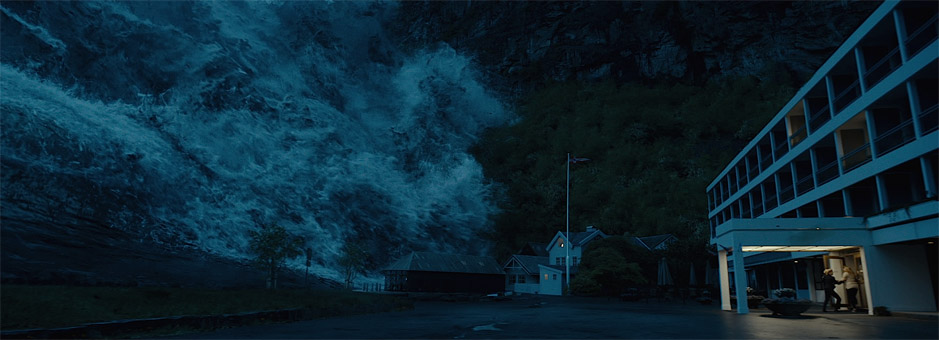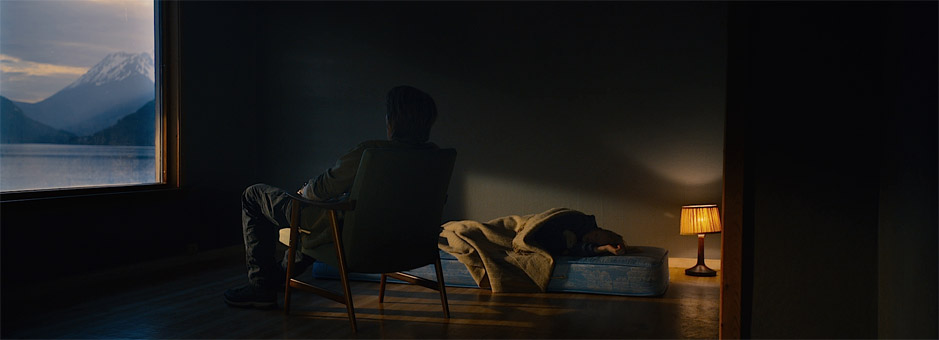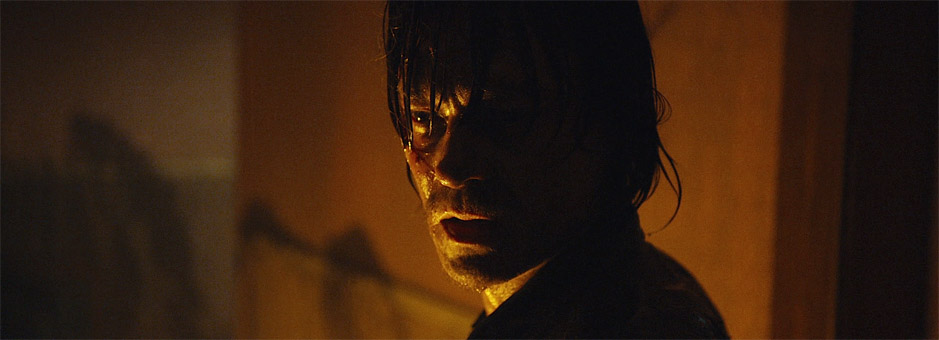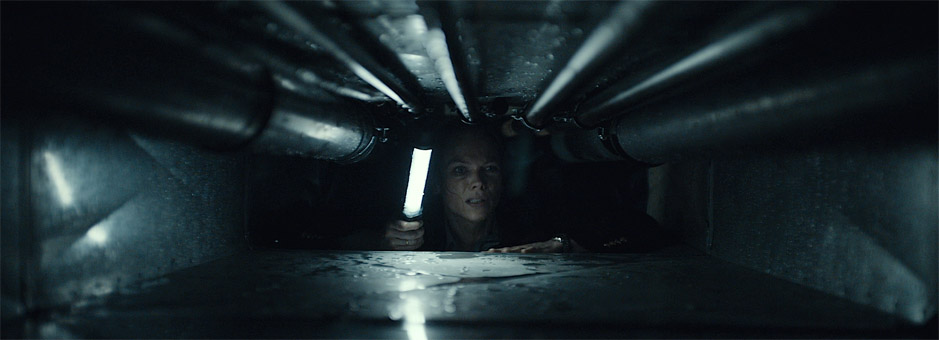Meet The Colourist
Cem Ozkilicci
Senior Colourist, Alter Ego, Toronto
Cem Ozkilicci started in colour over 10 years ago. Previously a Flame artist, he worked with Senior Colourist Rob Lingelbach at a post house in Istanbul where he learned first telecine then colour grading. Since then, he has never looked back.
Do you recall the first project you colour graded?
I had done some dailies for commercials and features before doing my first actual attended session, which was a music video. It was shot on Super 16mm and I graded on an ITK Y-Front using an 8:8:8 Renaissance DUI, which only gave me the one 'power window'. I recall the director asking for a warm look and heavy vignetting. I was nervous but managed nicely in the end.
What sort of content do you work on nowadays? What draws you to these projects?
I do mostly TVCs (television commercials) and occasionally features. I like to be able to mix things up every now and then. I think it’s healthy to change the pace and nature of the projects that I work on.
How many projects can you have simultaneously?
With TVCs, it can get pretty busy. Sometimes two to three spots a day, sometimes one, it really depends. With longer form projects, however, I like to focus over longer periods of time so I do not break the momentum while grading.
Can you describe your facilities and everyday processes?
I currently work at Alter Ego in Toronto as Senior Colourist. We have five Baselight systems and a very talented team of colourists as well as VFX artists. Most of the projects we work on are high-end TVCs for the Canadian market, although we occasionally work on exceptional features, like Mad Max: Road Fury (graded by Eric Whipp).
The TV commercials market in Canada is driven by creative editorial houses and agencies mostly. Editorial houses supply us with EDLs and we usually grade from either transcoded DPX files or RAW material that our assistants conform using their assist stations. If we manage a project that is complex in VFX, we always look into the possibility of using the BLG workflow since our VFX team uses NUKE and Baselight for NUKE.
With DITs, I sometimes have dialogue, especially with long form projects. It usually involves the DOP as well, so we end up discussing various aspects of production, looks that we are aiming to achieve, dailies and the post-production workflow.
With editors, my collaboration varies. With long form projects I’ve worked on, the editor tends to do his/her own thing, which is essentially telling a story and establishing a pace and structure to the narrative. With TVCs however, I collaborate with editors every day, more so in North America than in Europe. They are usually present in grading sessions and, to a certain extent, play the role of post-production supervisors, making sure the project runs smoothly from beginning to end.
As for VFX, any project I worked on always had some kind of collaboration with the VFX supervisor(s). Nowadays, VFX tends to start working way before the grading process, so having a dialogue is key. Knowing the colour space and resolution in which both you and they will be working in is important so there are no unpleasant surprises at the end. I also, at times, have the VFX supervisors in session to have them see their work on the big screen. It is valuable to see VFX shots, especially for features, in their intended viewing environment since what we perceive on a computer screen is different from a cinema screen.
The Wave is a Norwegian disaster movie where a tidal wave hits a small town within a fjord and a family is caught in the middle of it all. I had previously worked with the director, Roar Uthaug, and the DOP, John Christian Rosenlund, on a variety of different projects so we already had a great relationship.
They asked me if I could grade The Wave in Oslo at Storyline, where I had previously worked, even though I was already over in Toronto at Alter Ego. Alter Ego and Storyline agreed to have me do the grading in Oslo. The grade itself took roughly two weeks.
Even though the concept of the film is very much based on a Hollywood genre, we did not want to mimic the look of a typical blockbuster film. We wanted to maintain a certain Scandinavian style and quality to the film while accommodating the genre. Finding that balance was important.
John Christian and I always wanted to grade in ACES and since we both like pushing the limits and being on the edge, we felt it was a good opportunity to do so with The Wave, especially with the 4.4m1 Baselight release where ACES 1.0 was implemented.
We had a lot of low light situations so, in the end, ACES helped us quite a bit. The Baselight area tracker was a lifesaver, particularly as I relied on the use of masks on actors and objects to get extra detail. We tweaked some of the lighting in certain scenes with the DOP, and had a day/dusk for night sequence that really benefitted from shapes that were tracked to add the feeling of a Norwegian summer night.
Can you tell us more about this ACES workflow used on The Wave?
I have been experimenting with the ACES workflow since 2010 when it was still early in development. John Christian and I both knew that there could be a lot of benefits from ACES that would help us in grading.
The material was mostly RED Dragon except for a handful of GoPro shots. We worked straight from native RED files as well as the GoPro Quicktimes. Being a disaster movie, there were a lot of VFX shots spread out between three VFX vendors (Gimpville, Filmgate and Ghost VFX). All the VFX shots were delivered back to the grading suite in ACES OpenEXR.
We did the grade with a custom FilmLight DRT as opposed to the ACES 1.0 DRT. The reason behind this was mostly artistic - knowing the director, DP and the art direction of the film, I felt it was a better fit to the overall story. We also implemented custom IDTs for the GoPro material to get nicer roll-off especially with highlights.
I think Baselight and the way it works helped us a lot. I don’t believe any other system out there would’ve given me the tools and flexibility to achieve what we did.
How would you define your personal style of grading?
I think it’s important not to have just one approach to grading. As a colourist, you have to be able to see the beauty and purpose of different palettes. Open-mindedness and flexibility are key. Knowing how to deliver a variety of different looks and how to use all the tools at your disposal only adds to you as a colourist.
Are some stories easier to colour than others?
There are a lot of factors that play a role in determining how challenging a project will be. It depends on the story, how the material was shot, the client and the chemistry you have with them, plus their expectations. Some projects do not require a lot from the colourist, but others do. Sometimes a project that seems simple ends up being more complex than expected and vice-versa.
What part of the grading process do you spend most of your time on?
I would say after the switch from film to digital and telecine to non-linear grading, creating looks has become a much bigger part of the colourist’s job. Not to take anything away from colourists in the past, but I feel that before, the look was very much established by the DOP in his/her choice of film stock, lighting, filters, film processing, lenses and the art direction/make-up. A film stock was picked based on its inherent properties and how it rendered certain tones. This already established a direction for the image, anything around it such as filters, lenses and art direction would mould it even more.
Today, colourists are sometimes asked to emulate film - to take a digital image and give it a ‘filmic texture’. We tend to relight scenes at times especially since clients know what is possible today in grading with the use of complex shapes and trackers. We add grain and texture, change some elements of the art direction and make-up. We can even replace skies and add lens flares in grading. With all the tools available we are constantly asked to do more.
It may vary from project to project, but how early do you get involved in a production?
With the majority of TVCs, you are seldom part of the production. On bigger TVCs or longer form projects, however, you are sometimes asked for your ideas pre-production, alongside the agency, director, DOP, VFX supervisor, art director and make-up.
If I can get involved early, I usually do since every department affects the other and communication is key. It’s always nice to be able to oversee a project after the grading is done, in case there are beauty passes that require trims or further adjustments.
As a colourist, you have to realise that you are providing a service, so the client has to come first. You are sometimes given references or mood boards but sometimes you simply have to get an understanding of what they are after in terms of mood or palette. The art direction is usually a good indicator of what they are looking for.
It is great to have the opportunity to add a personal touch to direct the picture in a specific way or to have an open debate on creative choices, however this is sometimes not the case. Occasionally, the client’s taste is in line with yours and sometimes not.
Colours and tastes are subjective, so we have to be mindful of that. Every project has its intended purpose and nature. What is important, though, is applying certain ‘principles’ of colour harmony while grading and making the clients aware of any technical issues that might arise from creative decisions taken in the grading session. (i.e. over-sharpening, out-of-gamut colours, etc).
As a colourist, there is a lot to like about Baselight. Truelight Colour Spaces are certainly a plus and provide a lot of flexibility in projects with mixed footage. The keyers and trackers are simply amazing. To be able to track shapes in complex situations or even replace skies on moving shots is something that does not go unnoticed by my clients and certainly adds to what I can provide as a colourist in session.
As a facility, Baselight gives you the flexibility to adopt different pipelines and workflows for different types of projects. BLG files ease the data traffic between VFX and the grading suite as we can supply grading metadata to NUKE VFX stations for easier visualisation and compositing. BLGs also allow facilities to expand into other markets such as TV series, which sometimes do not have the big budgets to finish in an online/finishing suite. Sending BLG files back to an Avid or FCP can be beneficial in those cases as well.
Moreover, Baselight’s compatibility with the entire range of products from FilmLight allow seamless exchange between the different stages of production, from on-set grading, to dailies, to grade, to VFX. No one else provides seamless solutions like FilmLight.
Any particular colour ideas you are experimenting with or wanting to see more of?
Colour grading and workflows are now ever-changing. You really have to be on top of things and the concept of having a clear, defined ‘perfect’ workflow doesn’t really exist. You have to be flexible, constantly research and experiment - both technically and artistically.
Fundamentally, what is the role of a colourist in building the story?
Colour and colour palettes cater to a purpose and a storyline. There are so many elements in storytelling, and the use of colour, light and shadows is certainly a big part. Colours create and evoke certain moods and feelings and as a colourist, you have to be mindful of the story that is at hand, and what the story’s needs are.
Art direction, make-up, costume and lighting obviously play an essential role in the formation of a colour palette, and our role is to enhance whatever is in the image to cater to the world the director is creating.
What advice would you give to people interested in becoming a colourist?
The path to becoming a colourist has changed quite drastically in the past decade. I am fortunate enough to have seen the days of film and to have worked with it. When I first started, I did lots of dailies for both commercials and features. This really was a great way of learning the fundamentals of colour grading and getting quicker at balancing a shot and matching scenes. Good looking dailies were always noticed and this really was your chance to shine.
Nowadays, the use of dailies and junior colourists has somewhat dropped due to digital formats, but certainly a new role has been born from this, too - the DIT. The dynamics are a little different of course, but the fundamentals are very similar: balance the shot, match the scenes, be quick. And again, if you deliver good-looking dailies, someone will eventually notice them.
Another way of getting into grading would be to work in a ‘data lab’ of a post-production facility. Getting the fundamentals on how material is recorded, processed and conformed is crucial in knowing the basics of a good colour pipeline.
You also have to be mindful that colour grading isn’t like playing around on Photoshop in your spare time; you are providing a service that has hourly rates and working alongside clients and other departments and individuals. You have to be quick and keep in mind that it really is a balance of art, technology and human psychology.
Besides the technical, I think one should also explore as many arts as possible: cinema, music, literature, paintings, photography. Broaden your horizons, think outside of the box and never get too comfortable with what you do - comfort kills creativity. And if you have the means, travel as much as you can, there is so much to witness out there.
There really are too many sources of inspiration to name, but on the top of the list are my parents and sister as well as my teachers. I owe a lot to anyone who took me out as a child and as a student to the cinema, museums, photography exhibits and exposed me to music and literature of all kinds. Travelling is a huge inspiration as well, to meet new people, to hear stories, to taste new cuisines and see different textures; to observe how light is in different parts of the world. It never gets old.
What's your favourite TV series and/or films?
So many… Off the top of my head: The Wire, Deadwood, Curb Your Enthusiasm, Peaky Blinders, Fawlty Towers, The Larry Sanders Show, Seinfeld, Apocalypse Now, 2001: A Space Odyssey, North By Northwest, Il Conformista, Confessions of a Dangerous Mind, The Big Lebowski, Die Hard.
What do you like to do after you have been in a darkened room all day?
Most people end up having to commute or drive home after work. I’m fortunate that I don’t live far from the office, so it’s great to be able to get some air and walk home after a long day. I usually listen to some tunes during that 10-15 minute journey. Music helps me unwind and get into a different mindset.
Join In
If you want to participate in our MTC programme, we'd love to hear from you. Contact:
Alexa Maza
e: [email protected]
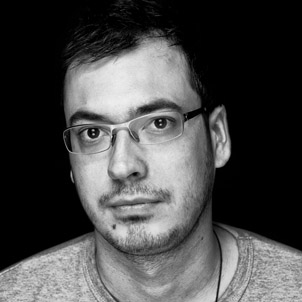
“As a colourist, you have to be able to see the beauty and purpose of different palettes. Open-mindedness and flexibility are key. ”
Details
Colourist: Cem Ozkilicci
Role: Senior Colourist
w: Alter Ego, Toronto




